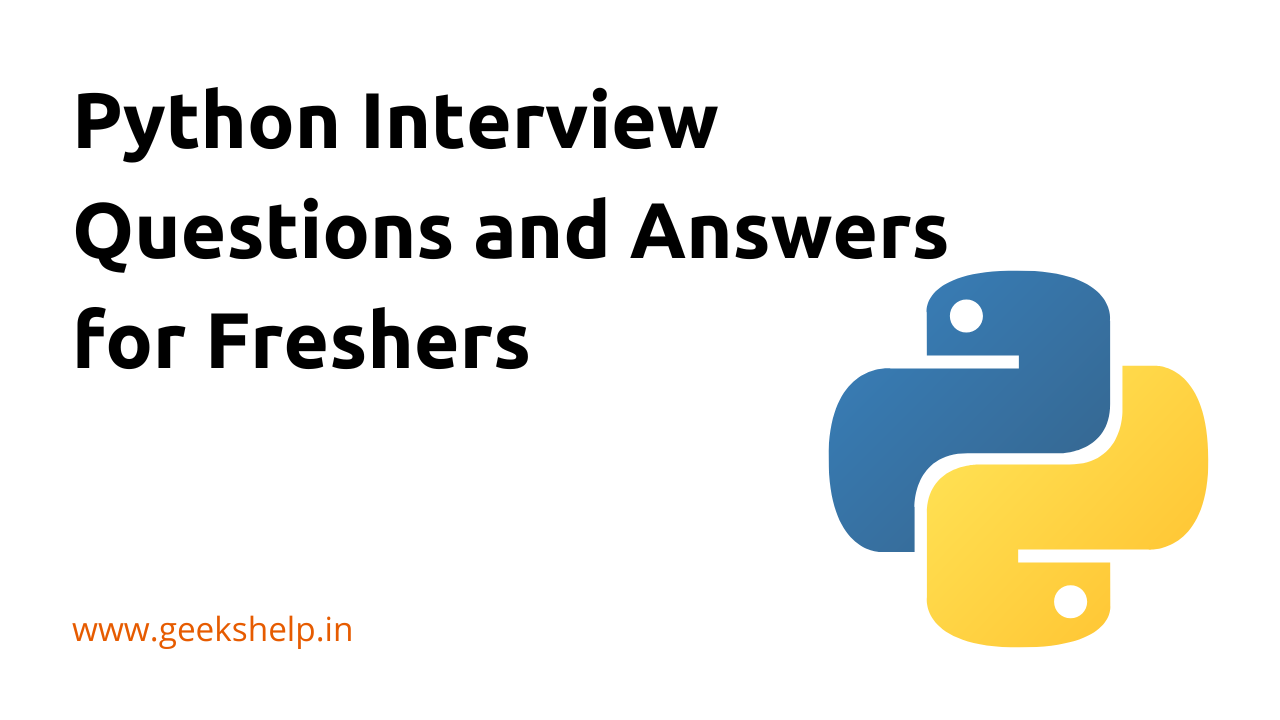
1. What is Python Language?
Python is a high-level, interpretable, and general-purpose programming language. It emphasizes code clarity and simplicity, making it suitable for both beginner and experienced developers. Python supports a variety of methods of programming, including procedural, object-oriented, and functional programming.
2. What are the key features of Python?
- Python's syntax is easy to read.
- It is a Dynamically typed language.
- Automatic memory management (garbage collection).
- Python has an extensive standard library.
- It supports multiple programming paradigms.
- Python is Platform independence.
3. What is PEP 8?
PEP 8 is the standard style guide for Python code. It provides suggestions for developing clean, readable code that is compatible with Python applications. Adhering to PEP 8 enhances code quality and improves developer collaboration.
4. How do you comment in Python?
In Python, you may create comments with the # symbol. The Python interpreter ignores comments, which are used to document code and improve code understanding.
For example
5. What are the different data types in Python?
Here is the list of different data types in Python:
- int (integer)
- float (floating-point number)
- str (string)
- bool (boolean)
- list (ordered collection)
- tuple (immutable ordered collection)
- dict (dictionary, key-value pairs)
- set (an unordered collection of unique elements)
6. How do you define a function in Python?
In Python, you define a function by using the def keyword followed by the function name and any parameters.
For example
7. What is the difference between "list" and "tuple" in Python?
- Lists in Python are mutable, which means you can change the elements after they are created. On the other hand, Tuples are immutable, which means that their elements cannot be modified after creation.
- Python Lists are defined using square brackets [ ], while tuples use parentheses ( ).
- Lists have more built-in methods for manipulation compared to tuples.
8. How do you "open" and "read" a file in Python?
In Python you can open a file using the open() method and read its contents using various methods like read(), readline(), or readlines().
For example
9. Explain the concept of list comprehension in Python?
List comprehension is an easy way to generate lists in Python. It allows you create a new list by applying an expression to each item in an existing iterable.
For example
10. What is the purpose of the __init__ method in Python classes?
Python classes have a specific function called __init__ which is used to initialize object instances. It is triggered automatically when a new instance of the class is generated. It is typically used to initialize instance variables or execute any other object-specific setup.
11. What is the difference between "==" and "is" in Python?
- == is used for value equality. It checks if the values of two operands are equal.
- 'is' is used for reference equality. It checks if the two operands refer to the same object in memory.
For example
11. What is the difference between append() and extend() methods in Python lists?
- The "append()" method adds its argument as a single element to the end of the list.
- "extend()" iterates over its argument adding each element to the list, extending the list.
For example
12. How do you handle exceptions in Python?
In Python programming language exceptions can be handled using try, except, else, and finally blocks. The code that can cause an exception is put inside the try block, and the handling of the exception is implemented in the except block.
For example
13. What is the use of __str__ method in Python?
The __str__ method is called when the print() function or str() function is invoked on an object. It should return a string representation of the object.
For example
14. What is the purpose of pass statement in Python?
The pass statement is a null operation that causes nothing to happen when executed. It is used as a placeholder when a statement is required but no code has to be executed.
For example
15. What is the use of __name__ variable in Python?
When a Python script executes directly, the __name__ variable is set to "__main__". It is useful for determining whether a script is being executed as the main application or imported as a module.
For example
16. Explain the concept of generators in Python.
Generators in Python are functions that produce an iterator. They create values one at a time, as needed, rather than storing the complete series in memory. This makes them memory efficient when working with massive datasets.
For example



